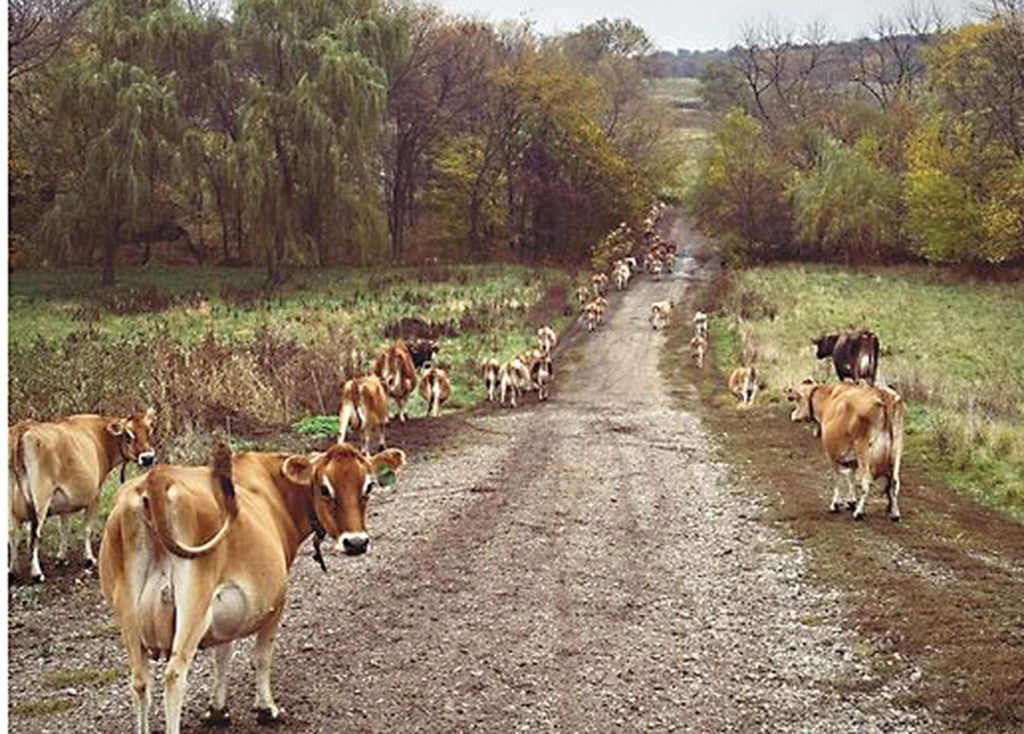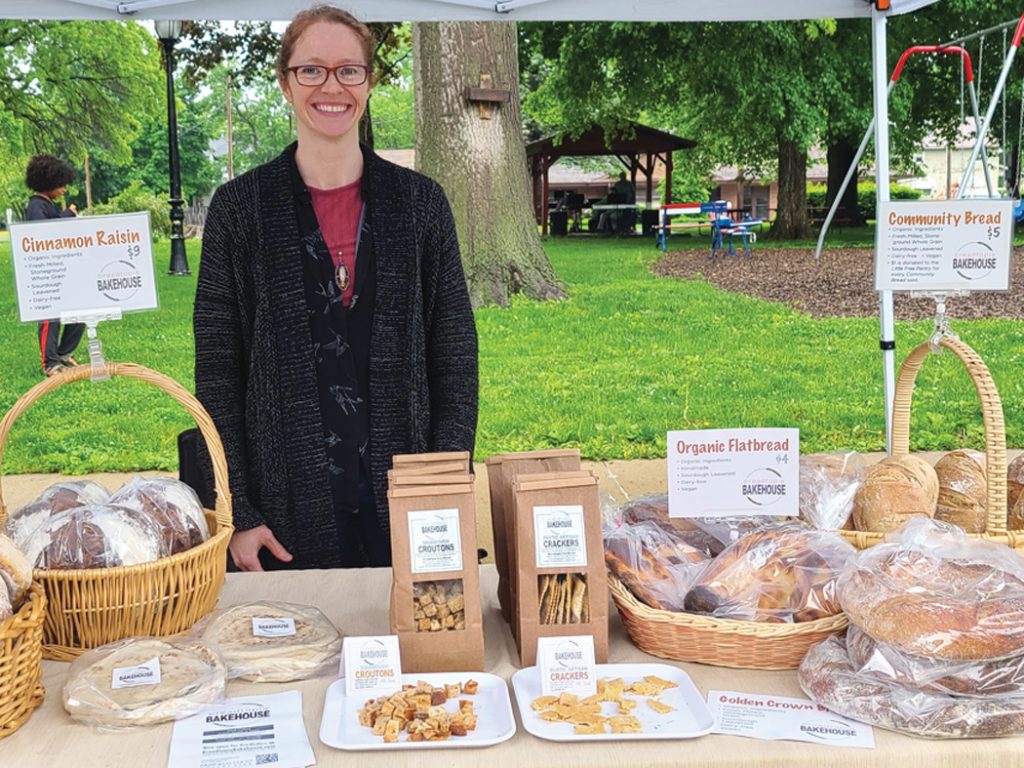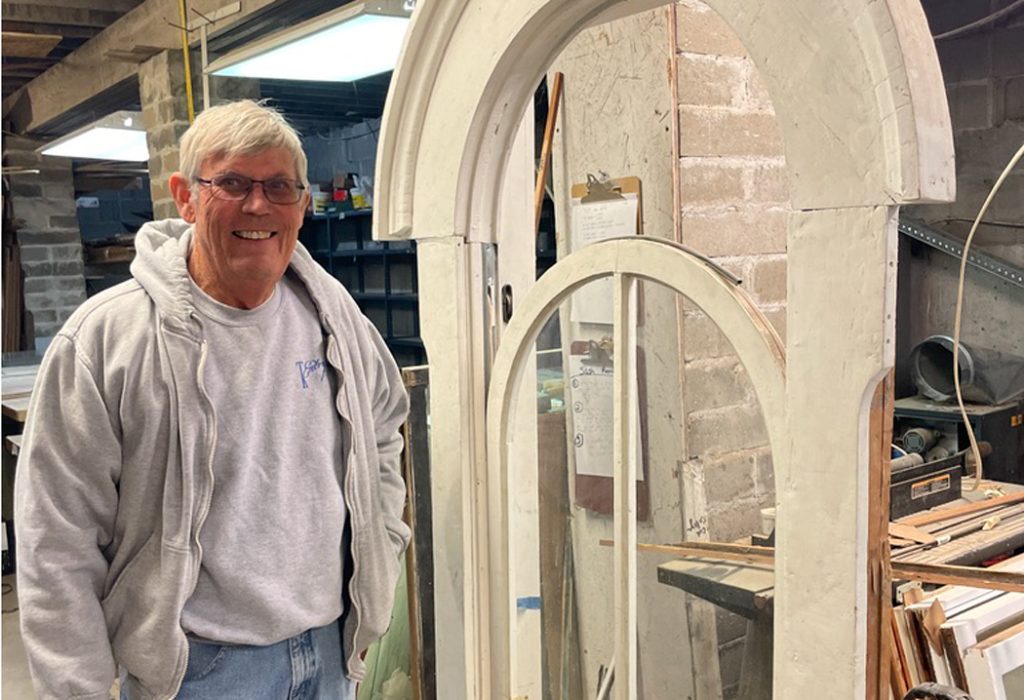
On April 20, the Southeast Iowa Sierra Club is hosting a new type of Earth Day festival called the Resilient Community Challenge. Events will be held from 10 a.m. to 6 p.m. at the Fairfield Arts & Convention Center, with workshops, demonstrations, and panels to explore all scales of circular solutions, from global to local and DIY.
Circular thinking is an idea at once familiar and foreign. Not to be confused with circular reasoning (a logical fallacy), circular thinking or circular design draws inspiration from natural systems to create cycles of regeneration that minimize waste.
Admittedly, this sounds fanciful or science-fictiony, like the myths of the noble savage and pastoral romance rolled into one. That is, until you talk to keynote speaker David Levine or local entrepreneurs at Breadtopia, Radiance Dairy, Fairfield Makers Cooperative, and Mills Seed Co and learn that circular manufacturing and economics are already happening globally and here in Iowa—and have a longstanding tradition in craftsmanship that’s built to last.
Circular Design
Cycles abound in nature: a forest is a nursery and graveyard, water evaporates and returns as rain, the respiration of plants and animals complement one another in an exchange of oxygen and carbon dioxide. Plants exchange carbon-rich sugars with underground microorganisms in exchange for key nutrients, a process that builds topsoil and draws carbon out of the atmosphere so that more plants can find a foothold in a stable climate.
In nature, one critter’s excrement is another’s nourishment. There is no waste, only an unbroken chain that transfers energy and materials into readily reusable components. What would it look like for manufacturers and communities to mimic biological systems? Is it possible for humans to live a waste-free lifestyle with the modern luxuries of manufacturing?
According to David Levine, the answer is yes. Biomimicry-inspired innovation can create a safe, healthy, waste-free future that not only conserves but also helps to regenerate natural resources. Levine is cofounder and president of the American Sustainable Business Network (ASBN). His confidence is rooted in ASBN members, all small to midsize businesses, and numerous examples around the globe, including industrial parks and cities. From agriculture to urban development, mimicking natural systems requires clever design for zero waste.
“If you look at a cherry tree, it assembles itself,” explains Lonnie Gamble, entrepreneur and founder of Fairfield Makerspace and Fairfield Makers Cooperative. “When it gets disassembled, it doesn’t get made into a cherry tree. It’s made into the fundamental building blocks of biology. We need to think about what 25 or 30 different ingredients could make everything in a modern industrial society, ingredients that could be broken apart and reused to make anything else. That’s the holy grail.”
At Radiance Dairy in Jefferson County, circular models are core. The dairy produces organic, grass-fed milk, yogurt, and cheese for the local community. Manager Gaabi Hathaway says the farm is viewed as a whole organism. In addition to pasture, the dairy grows hay, soy, and corn for winter feed and as a supplement for milking cows. Manure is collected from the barn and composted to fertilize fields.
Additionally, Hathaway says, “The act of grazing in and of itself is circular.” Cows mimic the grazing behavior of native ruminants. “Grasses in the prairie evolved with grazing animals eating them. They need to be eaten to survive.” Grazing forces plants to produce more sugar, and drives carbon sequestration.
Economic Development
Advocates for a circular, regenerative economy stress the significance of closed-loop models for economic development. Sierra Club student organizer Ishita Mukadam, a senior at Maharishi School, illustrates the difference between broken loops and closed loops with local examples of imported fruit (broken) and Breadtopia (closed). Loops can be local, regional, national, or even global—what matters is whether the exchange ultimately extracts value from one party or generates value for all parties.
“Usually, what would happen is fruit will be ordered from outside of Fairfield, say from California,” she says. “I order grapes to sell to people in Fairfield. With the money I get from Fairfield locals, I buy the fruits again from outside of the city. This creates a loop that is broken.
“What a circular model strives to do is close this gap and form a circle. The idea behind this is taking locally grown foods and fruits—anything, really, services even—and providing those resources back to Fairfield locals.”
Mukadam’s example is backed by numbers. A 2006 Leopold Center study by Dave Swenson estimated that if Iowa farms produced enough food to serve five servings of fruits and vegetables a day to Iowans for just three months of the year, 4,095 jobs and $302.4 million would be added to the state’s economy. The toll of a multi-decade transition to commodity export crops across the U.S. is increasing soil erosion, water pollution, and rural demise, as well as decreasing the nutritional value of food.*
Regardless of the commercial sector, buying from locally owned businesses has an outsized impact for a community’s economy. According to Levine, “When one dollar is spent at a local business, it usually circulates three times longer than if you’ve shopped at a big box store.” He argues that supporting local startups and businesses is a more effective economic development strategy than bringing in megacorporations, “because that money normally heads right back out to the corporate headquarters, which is usually not in that town.”
Trash or Treasure?
In contrast to the imported fruits filling Iowa’s grocery aisles, the bread sold by Breadtopia is part of a closed-loop system. “Breadtopia buys from local farmers that grow organic wheat, heirloom corn, rye, oats, and other grains,” says Galen Saturley, vice president of operations and marketing. Saturley sees potential in the company’s waste product, bran, which is left behind when flour is milled. Bran can be used to break down food waste through fermentation. By joining forces, restaurants and flour mills can divert food waste and transform it into food-safe compost.

Unfortunately, it’s not just byproducts that are seen as waste these days. Historic buildings made with old-growth timber, bricks, and doors that could last another century are often demolished. Mills Seed Co. owners Terry Philips and Sandra Johnson are devoted to sustainability through preservation. When renovation is out of the question, Philips and his crew salvage as much of a building as they can.

Philips and Johnson emphasize that historic buildings and furniture were designed to last, to be indefinitely reparable, and can even be disassembled into useful parts. In contrast, modern building materials last fewer decades and typically cannot be repaired or taken apart to repurpose. In other words, they are designed for the landfill.
“Planned obsolescence is the practice of designing products with a limited lifespan or intentionally making them difficult to repair or upgrade in order to encourage consumers to buy new products more frequently,” explains David Ford, a repair expert and graduate student studying biomimicry. While the practice can boost short-term profits, “it can have negative impacts on the environment and consumer wallets. Some people argue that it contributes to waste and encourages a throwaway culture.”
To combat this, a Repair Fair will be part of the Resilient Community Challenge. Ford will be available to help people fix items such as clothing, electronics, bicycles, and furniture. “It’s an excellent way for people to learn new skills and connect with their community while reducing their environmental impact.”
Redefining Business Sense
“Wherever there’s a problem, there’s the opportunity to solve it through business,” Levine tells me. From nontoxic pest control derived from plants to mushroom insulation panels and permeable pavement, biomimicry-based businesses are everywhere.
Levine points out that businesses that are “embedded in their communities” often have an ethic of social responsibility. To Levine, this is common sense. “We’re at a moment in time where business can play a very important role in helping us to solve the problems that we’re confronting,” Levine says. “What it takes is a different set of values that we could all live with. We need to get ourselves out of the political schisms and into a place of understanding some basic core values again: mutual respect, being transparent and honest about what it is that we’re doing and the products that we sell. . . . And at the end of the day, we’ve got to figure out a way to be together in this country and on this planet.”
Bringing Sustainability Home
Resilient Community Challenge organizers hope to help close loops in our state by raising awareness of local and regional resources and celebrating hometown heroes already modeling circular systems with their businesses. Plan to attend the festivities on Saturday, April 20, at the Fairfield Arts and Convention Center, 10 a.m.–6 p.m. on Saturday, April 20.
For more information, see Southeast Iowa Sierra Club.
*Citations: Perilous Bounty by Tom Philpott, Grain by Grain by Bob Quinn and Liz Carlisle, A New Vision for Iowa Food and Agriculture by Francis Thicke, Swine Republic by Chris Jones
